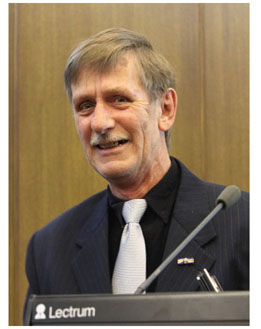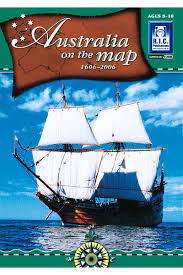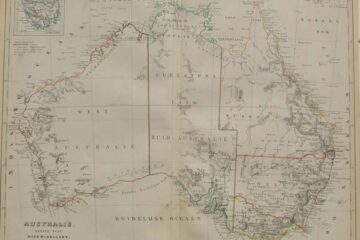
Rupert Gerritsen (1953 – 3 November 2013). He was born in Geraldton, Western Australia, of Dutch parents. He became an Australian historian who has made significant contributions to the fields of archaeology, anthropology, and environmental history. He has published extensively on the prehistory and history of Australia, particularly in relation to Indigenous cultures and the impact of European settlement.
Gerritsen has worked on numerous research projects and publications throughout his career.
Rupert’s mission was to help to reframe Australian maritime history from its traditional overemphasis on Cook and Flinders. These pages remind us how heavily knowledge of Australia’s maritime history has been biased, how its multicultural dimension has largely been hidden from us, and how this has denied us access to many fascinating stories. Rupert brings alive the contributions of the Dutch, French, Swedes and the Macassans, as well as the possibility that several other nations were involved in revealing these shores. He tells us the story of early contact from the perspective of Australia’s First Peoples. There are so many interesting challenges here to our understanding of our history.
Rupert’s perspective draws us up short. How could we possibly have believed that Cook ‘discovered’ Australia when the Dutch had mapped two thirds of the coast more than a century before he arrived?
Some of his notable works in relation to Dutch-Australian culture include:” The First Dutch Contacts with Australia,” which was published in the Journal of the Royal Australian Historical Society in 2005. In this article, Gerritsen discusses the early Dutch explorations of Australia, including the voyage of Dirk Hartog in 1616 and the more extensive voyages of Abel Tasman in the 1640s. He also wrote the book: “Early encounters with Australian shores“



He also contributed to the book “The Dutch Down Under: 1606-2006,” which was published in 2006 to mark the 400th anniversary of the Dutch landing on the western coast of Australia. In his chapter, “The Dutch and Australia’s Heritage,” Gerritsen discusses the legacy of Dutch exploration and settlement in Australia, including the establishment of the Dutch East India Company trading network and the impact of Dutch place names on the Australian landscape.
Through his research, he also investigated the location where two mutineers from the Batavia mutiny were marooned on 16 November 1629, possibly becoming Australia’s first European settlers. Gerritsen’s work led him to identify Hutt River, which is located approximately 500 kilometers north of Perth, as the site where Wouter Loos and Jan Pelgrom de Bye first stepped foot on Australian soil.

In 2002, together with Peter Reynders Rupert founded the organisation “Australia on the Map 1606- 2006” (AOTM) to stimulate and help organise events to commemorate the four hundredth anniversary of recorded European contact with Australia. His aim was to have Australians know their recorded early history better. The commemorations were a great success, with over 150 events taking place around the nation. The culmination of these was a commemorative voyage along the west, south and east coasts of Australia and Tasmania by a Fremantle-built replica of the Duyfken, the original of which, under VOC (Dutch East India Company) Captain Willem Janszoon, made the first known sighting of Australia by Europeans in 1606. As a result of this effort, Rupert was appointed a Knight in the Order of Orange-Nassau (R.O.N.) in 2007, for his services to Dutch-Australian relations.
At the time of his passing, he was the Chair of its successor organization, the Australia on the Map Division of the Australasian Hydrographic Society, continuing his dedication to promoting knowledge of Australia’s historical significance.
He has received numerous awards and accolades for his contributions to the field of history, including the Centenary Medal for services to Australian society and the Australian and New Zealand Association for the Advancement of Science’s History and Philosophy of Science Medal.
Gerritsen was a vocal opponent of conscription and the Vietnam War. According to news reports and court documents, Gerritsen was involved in the bombing of the Department of Labor and National Service office in Perth in 1972. However, he was not charged with terrorism or other serious offenses, and he did not serve a lengthy prison sentence. Instead, he was sentenced to one year in prison for charges related to possession of explosives and unlawful damage.
For more information:
Rupert Gerritsen’s Website (note this website has not been updated after the passing of Rupert)


